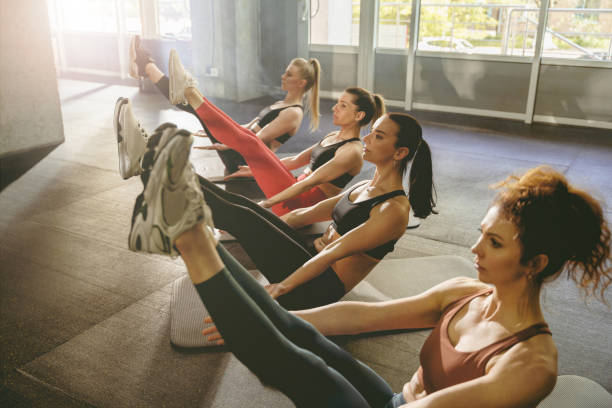Crunches are a classic exercise for targeting the abdominal muscles and sculpting a stronger, more defined core. Before we dive into the nitty-gritty details, let’s explore why these exercises are popular and effective for strengthening the core.
Crunches primarily target the rectus abdominis, the long muscle that runs vertically along the front of your abdomen, helping to build definition and tone in this area.
In addition to targeting the rectus abdominis, crunches also engage the obliques, the muscles on the sides of your abdomen, and the transverse abdominis, the deepest layer of abdominal muscles responsible for core stability.
Crunches can help improve posture by strengthening the muscles that support the spine, reducing the risk of lower back pain and promoting proper alignment.
Mastering Proper Crunch Form
Proper form is essential when performing crunches to ensure you’re effectively targeting the intended muscles and minimizing strain on other areas of the body.
Lie on your back with your knees bent and feet flat on the floor, hip-width apart. Place your hands lightly behind your head, elbows pointing outward, and avoid pulling on your neck or using momentum to lift your upper body.
Engage your core muscles by drawing your navel towards your spine, and exhale as you lift your shoulder blades off the floor, bringing your chest towards your knees.
Pause briefly at the top of the movement, then inhale as you lower your upper body back down to the starting position, keeping your lower back in contact with the floor throughout the exercise.
Exploring Crunch Variations
Once you’ve mastered the basic crunch, you can add variety to your workouts by incorporating different variations to target different areas of the core and keep your routine exciting.
1. Bicycle Crunches
Begin in the same starting position as the basic crunch, but instead of lifting straight up, twist your torso and bring one elbow towards the opposite knee while extending the other leg straight out. Alternate sides in a pedaling motion.
2. Reverse Crunches
Start by lying on your back with your arms at your sides and your palms facing down. Lift your legs off the ground, bending your knees at a 90-degree angle. Engage your core and exhale as you lift your hips off the floor, bringing your knees towards your chest.
3. Russian Twists
Sit on the floor with your knees bent and feet flat on the ground. Lean back slightly, keeping your back straight and core engaged. Hold a weight or medicine ball with both hands and twist your torso to the right, then to the left, while keeping your feet grounded.
4. Vertical Leg Crunches
Lie on your back with your legs extended straight up towards the ceiling. Place your hands lightly behind your head and lift your shoulder blades off the floor, reaching towards your toes. Focus on engaging your lower abs to lift your upper body off the ground.
5. Plank with Knee to Elbow Crunch
Start in a high plank position with your hands directly beneath your shoulders and your body forming a straight line from head to heels. Bring your right knee towards your right elbow, crunching your obliques, then return to the starting position and repeat on the other side.
Tips for Progression
As you become stronger and more proficient in performing crunch exercises, consider incorporating these tips to continue challenging your muscles and achieving optimal results.
1. Increase Reps or Sets
Gradually increase the number of repetitions or sets performed during your crunch workouts to progressively overload the muscles and stimulate growth and strength gains.
2. Add Resistance
Hold a weight plate or medicine ball against your chest during crunches to add resistance and increase the intensity of the exercise, further stimulating muscle growth and development.
3. Focus on Tempo
Play with the tempo of your crunches by slowing down the lowering phase of the movement or adding pauses at the top to increase time under tension and maximize muscle engagement.
4. Incorporate Isometric Holds
At the top of the crunch movement, hold for a few seconds before lowering back down to the starting position, focusing on maintaining tension in the abdominal muscles throughout the hold.
5. Listen to Your Body
Pay attention to how your body responds to crunch exercises and adjust your training intensity and volume accordingly. Focus on maintaining proper form and technique to prevent injury and get the most out of your workouts.
Crunch exercises are a versatile and effective way to strengthen your core, improve posture, and enhance overall abdominal definition and tone. By mastering proper form techniques, exploring different variations, and implementing progressive overload strategies, you can sculpt a stronger, more resilient core and achieve your fitness goals.
